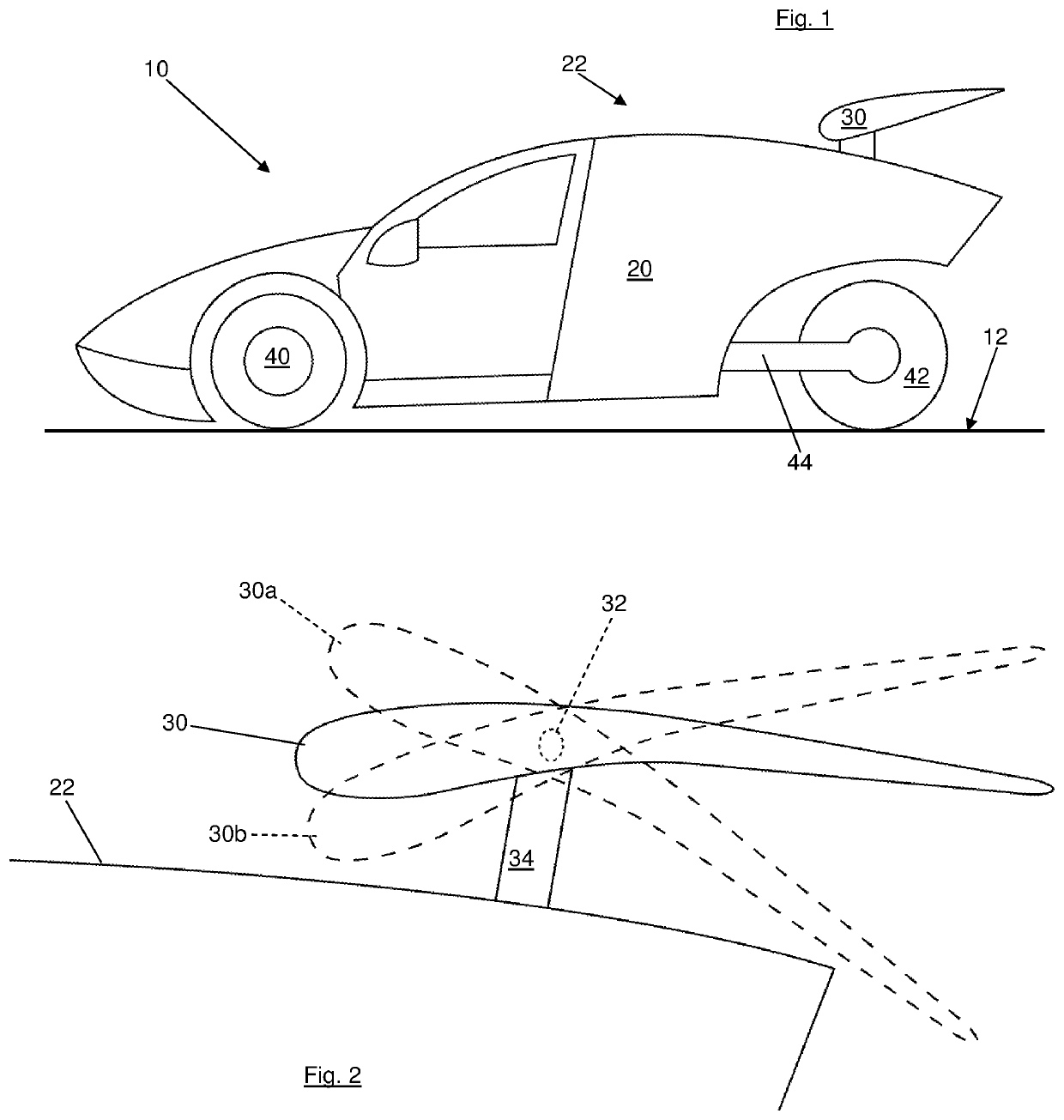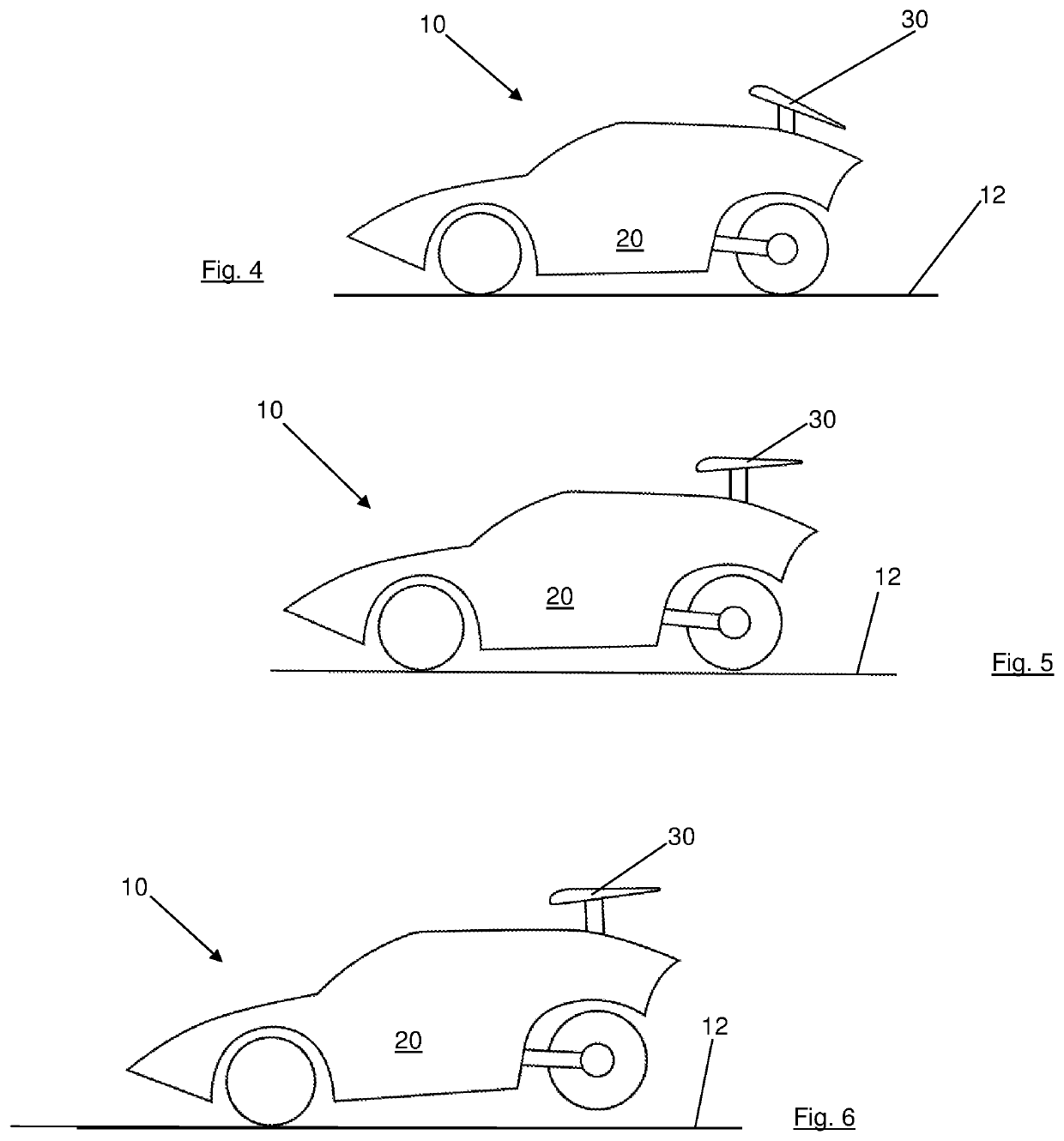Enhanced vehicle efficiency using airfoil to raise rear wheels above road surface
a technology of rear wheels and airfoil, which is applied in the field of vehicles to achieve the effects of reducing emissions, reducing vehicle body weight, and preventing or reducing high wind
- Summary
- Abstract
- Description
- Claims
- Application Information
AI Technical Summary
Benefits of technology
Problems solved by technology
Method used
Image
Examples
Embodiment Construction
[0024]A vehicle 10 that may operate according to the invention is shown in FIG. 1. The vehicle 10 has a body 20 with an upper body surface, which may be a roof 22, and an airfoil, such as the wing 30, attached to the rear section of the body. The wing 30 may be attached to vehicle 10 by any conventional means, such as one or more rigid posts 34 that securely mount to, or are integral with, an upper body structure of the vehicle 10. Alternative mounting structures include, without limitation, brackets, beams, poles, cables, and any other structures that do not interfere excessively with the aerodynamic features of the wing 30 as described herein.
[0025]The wing 30 may be a conventional, preferably asymmetric (about a chord line) airfoil that is attached to the posts 34 in such a manner that, during movement of the vehicle 10 along the ground, the air passing over the wing 30 and body 20 causes lift. The wing may be stabilized so the air flowing along it produces insufficient force to ...
PUM
 Login to View More
Login to View More Abstract
Description
Claims
Application Information
 Login to View More
Login to View More - Generate Ideas
- Intellectual Property
- Life Sciences
- Materials
- Tech Scout
- Unparalleled Data Quality
- Higher Quality Content
- 60% Fewer Hallucinations
Browse by: Latest US Patents, China's latest patents, Technical Efficacy Thesaurus, Application Domain, Technology Topic, Popular Technical Reports.
© 2025 PatSnap. All rights reserved.Legal|Privacy policy|Modern Slavery Act Transparency Statement|Sitemap|About US| Contact US: help@patsnap.com



